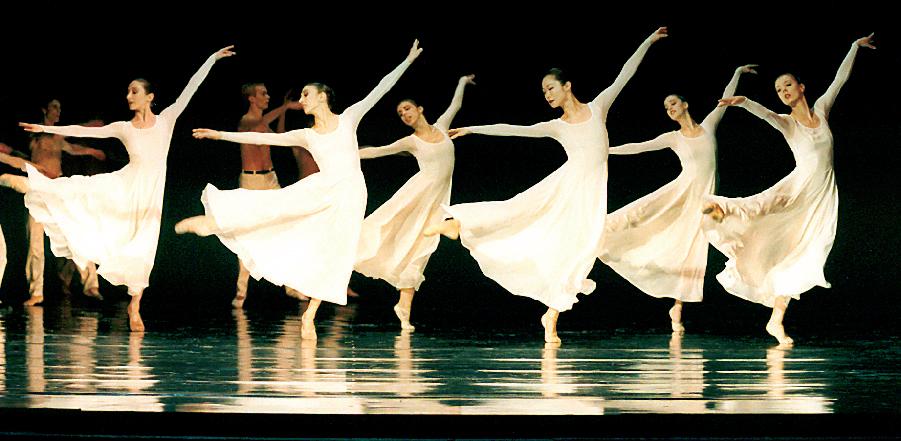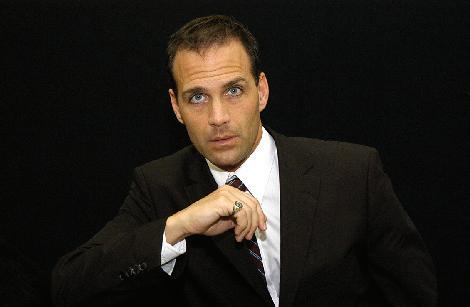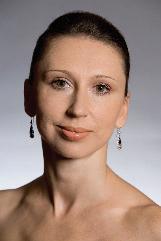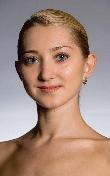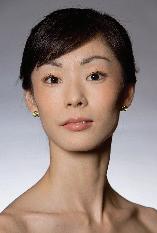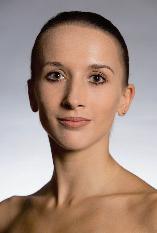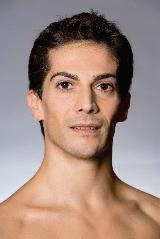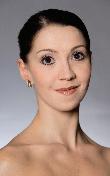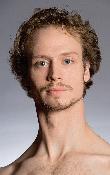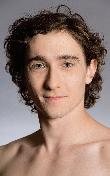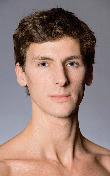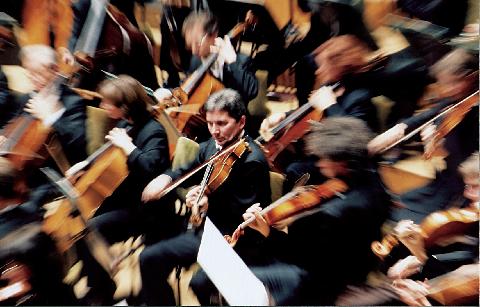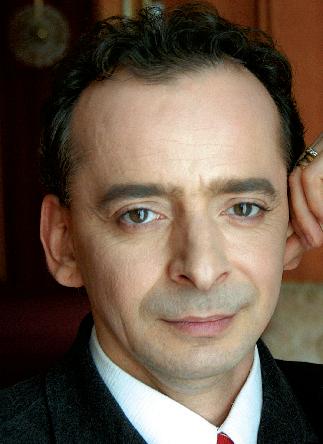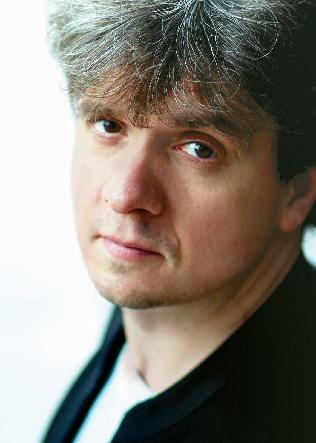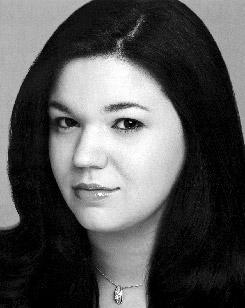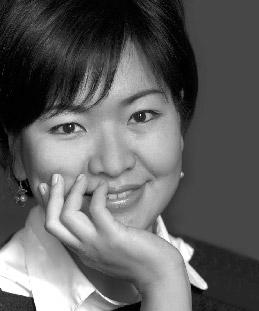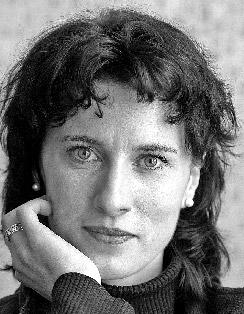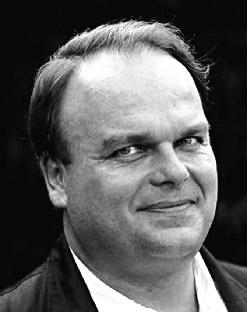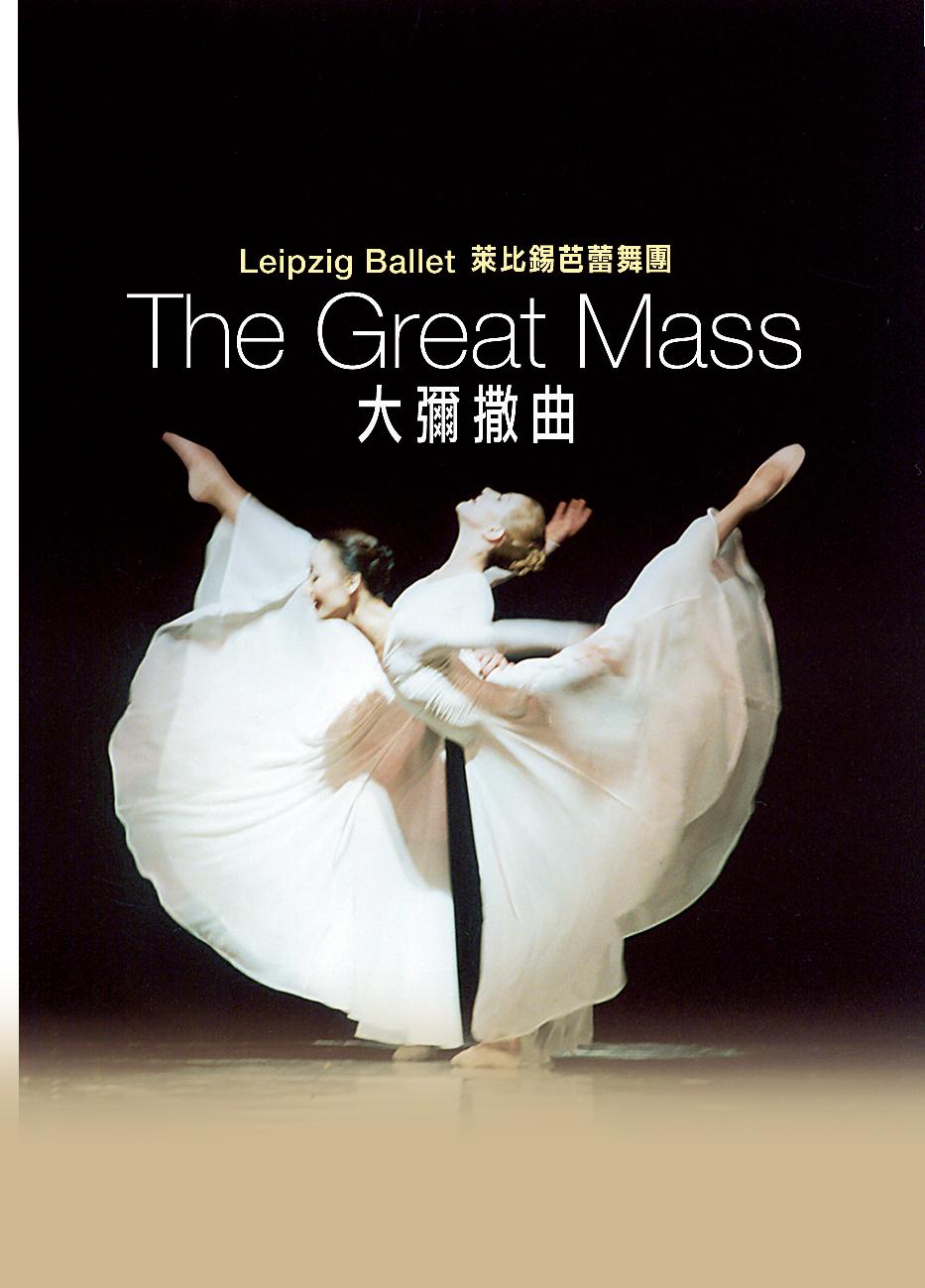
Leipzig Ballet with the Gewandhaus Orchestra and the Chorus and Soloists of the Leipzig Opera
萊比錫芭蕾舞團 暨 萊比錫布業大廳樂團 、
萊比錫歌劇院合唱團 及 獨唱家
The Great Mass 大彌撒曲
編舞 伍爾夫.蕭爾茨
Choreographer Uwe Scholz
12 節目及演出者 Programme and Cast 18
Performance Credits
Production Credits
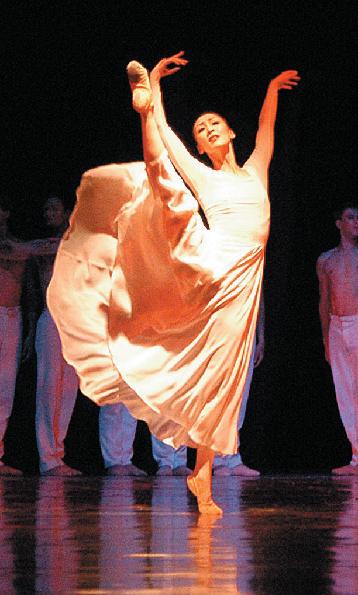
20 文本 Text
格雷果聖凉 Gregorian Chant
C 小調彌撒曲 Mass in C minor
我信 Credo
聖體頌 Ave verum Corpus
26
詩 Poems
31 特稿 Feature
直搗天國大門 Storming the Gates of Heaven
8-10.3.2007
香港文化中心大劇院
Grand Theatre
Hong Kong Cultural Centre
演出長約2 小時,不設中場休息
Running time: approximately 2 hours with no interval
38
演出團體介紹 Company Profiles
萊比錫芭蕾舞團 Leipzig Ballet
萊比錫布業大廳樂團 Gewandhaus Orchestra
萊比錫歌劇院合唱團 Leipzig Opera Choir
45 簡歷 Biographies
編舞 Choreographer
指揮 Conductor
演唱家 Vocal Soloists
53
55
樂團成員 Orchestra Members
合唱團成員 Choir Members
所有芭蕾舞照片
All ballet photographs © Andreas H Birkigt
所有樂團照片
All orchestra photographs © Gert Mothes
為了讓大家對這次演出留下美好印象,請切記 在節目開始前關掉手錶、無㵟電話及傳呼機的 響鬧裝置。會場內請勿擅自攝影、錄音或錄 影,亦不可飲食和吸煙,多謝合作。
To make this performance a pleasant experience for the artists and other members of the audience, PLEASE switch off your alarm watches, MOBILE PHONES and PAGERS. Eating and drinking, unauthorised photography and audio or video recording are forbidden in the auditorium. Thank you for your co-operation.
節目及演出者 Programme and Cast
左列樂曲為莫扎特 C 小調彌撒曲;右列為編舞伍爾夫.蕭爾茨在彌撒曲之 結構上加插的其他莫扎特樂曲、格雷果聖凉及多首現代音樂和詩(紫字)。
格雷果聖凉
聖多默坎特伯里瞻禮彌撒曲
進堂凉(讓我們慶祝)
Leipzig Ballet
莫扎特 (1756-1791)
C 小調彌撒曲, K427
垂憐經 上主,求㢠垂憐
Kiyoko Kimura and Leipzig Ballet
榮耀頌 天主在天得榮耀
Leipzig Ballet
我們讚美㢠
Maiko Oishi
Itziar Mendizabal and Rémy Fichet
Oksana Kulchytska and Jean-Sébastien Colau
Stéphanie Gerbal and Martin Chaix
感謝㢠
Leipzig Ballet 主
Maja Veljkovi ´ c
Lee Chan-yi
赦免世上罪人
Leipzig Ballet
因為只有㢠是神聖的
Kiyoko Kimura
Maiko Oishi
Giovanni Di Palma
耶穌基督/㢠和聖潔的神
Leipzig Ballet
湯瑪士.揚 (1940-) 《地點和時間》
詩:班納德.勞斯 《時間與時代》
Leipzig Ballet
All the music blocked to the left hand margin is the Mass in C minor written by Mozart. Into this basic structure Uwe Scholz has interwoven other music by Mozart, Gregorian chants and more contemporary music and poetry (text in purple), which make up the works blocked to the centre of the page.
Gregorian Chant
Mass for the Feast of St Thomas of Canterbury
INTROITUS
Leipzig Ballet
Wolfgang Amadeus Mozart (1756-1791)
Mass in C minor, K427
KYRIEKyrie eleison
Kiyoko Kimura and Leipzig Ballet
GLORIAGloria in excelsis Deo
Leipzig Ballet
Laudamus te
Maiko Oishi
Itziar Mendizabal and Rémy Fichet
Oksana Kulchytska and Jean-Sébastien Colau
Stéphanie Gerbal and Martin Chaix
Gratias
Leipzig Ballet
Domine
Maja Veljkovi ´ c
Lee Chan-yi
Qui tollis
Leipzig Ballet
Quoniam
Kiyoko Kimura
Maiko Oishi
Giovanni Di Palma
Jesu Christe / Cum Sancto Spiritu
Leipzig Ballet
Thomas Jahn (1940-)
Orte und Zeiten - tempi e luoghi (Places and Times)
Bernard Laux
Zeit und Zeiten (Time and Times)
Leipzig Ballet
哥爾格.庫塔克 (1926-) 《遊戲》及《改編曲:馬蕭至巴赫》
我們是花兒,花兒而已︙︙
Maja Veljkovi ´ c and Jean-Sébastien Colau
-巴赫: 患難深淵向主呼求, BWV687
Oksana Kulchytska, Anna Tsybina and Sebastian Angermaier
泛音遊戲
Montserrat León and Rémy Fichet
︙︙再說,我們是花兒,花兒而已︙︙
Giovanni Di Palma
打-罵
Martin Chaix -巴赫:
BWV106
Maja Veljkovi ´ c and Jean-Sébastien Colau
Montserrat León and Rémy Fichet
掌擊
Martin Chaix
從遠處
Sebastian Angermaier
保羅.雪朗 (1920-1970) 《污名》
Sebastian Angermaier
莫扎特
C 小調慢板與賦格曲, K546
Itziar Mendizabal and Jean-Sébastien Colau
Maiko Oishi and Giovanni Di Palma
Oksana Kulchytska and Rémy Fichet
Tatjana Paunovi ´ c and Martin Chaix
保羅.雪朗 《一線陽光》
Sebastian Angermaier
格雷果聖凉
信經
Leipzig Ballet
György Kurtág (1926-)
Játékok (Games) and
Transcriptions from Machaut to J S Bach
Blumen die Menschen, nur Blumen ... (Flower We Are, Mere Flowers ...)
Maja Veljkovi ´ c and Jean-Sébastien Colau
Aus tiefer Not schrei ich zu dir, BWV687
(J S Bach: In deep distress I cry to thee)
Oksana Kulchytska, Anna Tsybina and Sebastian Angermaier
Spiel mit Obertönen (Play with Overtones)
Montserrat León and Rémy Fichet
...und noch einmal: Blumen die Menschen, nur Blumen ... (...And Once More: Flowers We Are, Mere Flowers...)
Giovanni Di Palma
Schläge-Zank (Beating-Quarrelling)
Martin Chaix
Gottes Zeit ist die allerbeste Zeit, BWV106 (J S Bach: God’s time is the very best time)
Maja Veljkovi ´ c and Jean-Sébastien Colau
Zorniger Choral (Furious Chorale)
Montserrat León and Rémy Fichet
Mit den Handflächen (Palm Stroke)
Martin Chaix
Aus der Ferne (From a Distance)
Sebastian Angermaier
Paul Celan (1920-1970)
Brandmal (Stigma)
Sebastian Angermaier
Wolfgang Amadeus Mozart
Adagio and Fugue in C minor, K546
Itziar Mendizabal and Jean-Sébastien Colau
Maiko Oishi and Giovanni Di Palma
Oksana Kulchytska and Rémy Fichet
Tatjana Paunovi ´ c and Martin Chaix
Paul Celan
Fadensonnen (Threadsuns)
Sebastian Angermaier
Gregorian Chant
CREDO
Leipzig Ballet
信經我信惟獨上帝
Leipzig Ballet
因祂神聖
Oksana Kulchytska
Anna Tsybina, Carolina Boscán and Alla Bykanova
帕特 (1935-) 《我信》(1968)
Sebastian Angermaier and Leipzig Ballet
莫扎特
聖體頌, K618
Leipzig Ballet
保羅.雪朗 《詩篇》
Sebastian Angermaier
聖哉經聖哉/和撒那之聲
Leipzig Ballet
迎主曲奉主名而來/和撒那之聲
Kiyoko Kimura
Maiko Oishi
Jean-Sébastien Colau
Giovanni Di Palma
湯瑪士.揚 《地點和時間》
詩: 卡圖盧斯(公元前 84 至 54 年) 《千里迢迢》
Leipzig Ballet
羔羊經(經文配合《垂憐經》的音樂演唱) Leipzig Ballet
CREDOCredo in unum Deum
Leipzig Ballet
Et incarnatus est Oksana Kulchytska
Anna Tsybina, Carolina Boscán and Alla Bykanova
Arvo Pärt (1935-)
Credo (1968)
Sebastian Angermaier and Leipzig Ballet
Wolfgang Amadeus Mozart Ave verum Corpus, K618
Leipzig Ballet
Paul Celan
Psalm
Sebastian Angermaier
SANCTUSSanctus / Osanna
Leipzig Ballet
BENEDICTUSBenedictus qui venit / Osanna
Kiyoko Kimura
Maiko Oishi
Jean-Sébastien Colau
Giovanni Di Palma
Thomas Jahn
Orte und Zeiten - tempi e luoghi (Places and Times)
Gaius Valerius Catullus (ca 84-54 BC) Multas per gentes...
Viele Länder durchfuhrich... (Wandering through many countries...)
Leipzig Ballet
AGNUS DEI (This liturgical text is to the music of the KYRIE)
Leipzig Ballet
意念、編舞、設計及服裝 Concept, Choreography, Setting and Costumes
伍爾夫.蕭爾茨 Uwe Scholz
音樂 Music
莫扎特 Wolfgang Amadeus Mozart (C小調彌撒曲,K427; (Mass in C minor, K427; C小調慢板賦格曲,K546; Adagio and Fuge in C minor, K546;
聖體頌,K618) and Ave verum Corpus, K618)
湯瑪士.揚 Thomas Jahn
哥爾格.庫塔克 György Kurtág
帕特 Arvo Pärt
萊比錫芭蕾舞團獨舞員及群舞員 Soloists and Corps de Ballet of the Leipzig Ballet
萊比錫歌劇院 Leipzig Opera
藝術總監 Artistic Director
享利.邁亞 Henri Maier
行政總監 Administrative Director
亞歷山大.馮馬雷域 Alexander von Maravic
演唱家 Vocal soloists
女高音 Sopranos
劉恩伊(10日場)
Eun Yee You (10 matinee)
伊蕾恩.阿爾瓦雷斯(8-10夜場)Elaine Alvarez (8-10 evening)
女中音 Mezzo-soprano
卡芙蓮.葛琳 Kathrin Göring
男高音 Tenor
馬田.皮祖爾德 Martin Petzold
男低音 Bass
湯瑪士.奧爾特爾-哥爾曼斯 Thomas Oertel-Gormanns
萊比錫歌劇院合唱團 Chorus of the Leipzig Opera
合唱團總監 Chorus Master
索仁.艾克霍夫 Sören Eckhoff
萊比錫布業大廳樂團 Gewandhaus Orchestra
指揮 Conductor
法蘭克.貝爾曼 Frank Beermann
長笛 Flute
科妮莉亞.格羅曼 Cornelia Grohmann
雙簧管 Oboe
伍爾夫.克蘭索治 Uwe Kleinsorge
巴松管 Bassoon
戴維.彼得森 David Petersen
管風琴 Organ
史蒂芬.諾特 Stefan Knoth
萊比錫芭蕾舞團 Leipzig Ballet
藝術總監 Artistic Director
芭蕾舞團長 Ballet Masters
藝術總監助理 Assistant to the Artistic Director
組織及排練策劃 Organisation and Rehearsal scheduling
總監秘書 Secretary to the Director
芭蕾舞鋼琴伴奏 Ballet Pianists
舞台監督 Stage Manager
物理治療師 Physiotherapist
化妝 Make-up
技術總監 Technical Director
首席舞台總監 Principal Stage Director
舞台總監 Stage Director
舞台機械 Stage Hydraulics
燈光總監 Lighting Director
音響總監 Sound Director
舞台傢具 Stage Furniture
道具主任 Property Master
錄像技師 Video Technician
服裝由伊娃.米斯利茲監督,於萊比錫歌劇院的工作坊製作
Paul Chalmer
Daniel Otevrel and Siegfried Martin Wende
Editha Majer
Angela Luksch
Mara Rupprecht
Beatrix Steidl and Tatjana Kretschmar
Marlies Pumperla
Cornelia Richer-Dorndeck
Julia Knecht and Hans Friedrich
Steffen Böttcher
Lutz Uhlig
Tillmann Schneiderheinze
Steffen Naundorf
Michael Röger
Hans Hermann Hönsch
Adelbert Wohlauf
Heidi Grießbach
Günter Mißlitz
Costumes were made in the workshops of the Leipzig Opera under the direction of Eva Mißlitz
加料節目 Festival Plus
演後藝人談 8.3.2007(四) Meet-the-Artists (Post-Performance) 8.3.2007 (Thu) 歡迎觀眾演出後留步,與保羅.查默及
If you would like to meet Paul Chalmer and the Leipzig Ballet, 萊比錫芭蕾舞團見面。 please stay behind in the auditorium after the performance.
工作坊-芭蕾舞班 Workshop – Ballet Class 導師:保羅.查默 Instructor: Paul Chalmer 9.3.2007(五)下午4:15-5:459.3.2007 (Fri) 4:15 – 5:45 pm 香港文化中心大劇院排練室(二) Rehearsal Room 2, Grand Theatre 費用:$200Hong Kong Cultural Centre 詳情請參閱加料節目小冊子, Fee: $200 或瀏覽藝術節網站:www.hk.artsfestival.orgFor details, please refer to the Festival Plus Booklet or go to the Festival website: www.hk.artsfestival.org
Gregorian Chant 格雷果聖凉
Mass for the Feast of St Thomas of Canterbury
聖多默坎特伯里瞻禮彌撒曲
Wolfgang Amadeus Mozart 莫扎特
Mass in C minor, K427 C小調彌撒曲,K427
INTROITUS
Gaudeamus omnes in Domino diem festo celebrantes sub honore Thomae martyris: De cuius passione gaudent angeli et colaudent Filium Dei.
Exaudi Deus orationem meam cum deprecor: A timore inimici eripe animam meam.
Gloria Patri et Filio et Spiritui Sancto: sicut erat in principio et nunc et semper: Et in saecula saeculorum. Amen.
KYRIE
Kyrie eleison. Christe eleison. Kyrie eleison.
GLORIA
Gloria in excelsis Deo. Et in terra pax hominibus bonae voluntatis.
Laudamus te. Benedicimus te. Adoramus te. Glorificamus te.
Gratias agimus tibi propter magnam gloriam tuam.
Domine Deus, Rex coelestis, Deus Pater omnipotens. Domine Fili unigenite, Jesu Christe. Domine Deus, Agnus Dei, Filius Patris.
Qui tollis peccata mundi, miserere nobis. Qui tollis peccata mundi, suscipe deprecationem nostram. Qui sedes ad dexteram Patris, miserere nobis.
Quoniam tu solus Sanctus, tu solus Dominus, tu solus Altissimus.
Jesu Christe.
Cum Sancto Spiritu in gloria Dei Patris. Amen.
INTROITUS
Let us all rejoice in the Lord celebrating a festival in honour of the martyr Thomas; at whose passion the angels rejoice and give praise to the Son of God.
Hear, O God, my prayer, when I make supplication to Thee: deliver my soul from the fear of the enemy.
Glory be to the Father and to the Son and to the Holy Ghost, as it was the beginning is now and ever shall be, world without end. Amen.
KYRIE
Lord, have mercy on us. Christ, have mercy on us. Lord, have mercy on us.
GLORIA
Glory to God in the highest. And peace to men of good will
We praise Thee. We bless Thee. We adore Thee. We glorify Thee.
We give Thee thanks for Thy great glory.
Lord God, heavenly King, God the Father almighty.
Lord Jesus Christ, only begotten Son. Lord God, Lamb of God, Son of the Father.
Thou who takest away the sins of the the world, have mercy on us. Thou who takest away the sins of the world, receive our prayer. Thou who art seated at the right hand of the Father, have mercy on us.
For Thou alone art Holy, Thou alone art the Lord, Thou alone art the most high.
Jesus Christ.
With the Holy Spirit in the glory of God the Father. Amen.
進堂凉
讓我們在主內慶祝, 向殉道者聖多默致敬的盛事, 他的熱心,讓天使歡欣, 讚美神的兒子。
神啊,我向㢠祈求, 請垂聽我的禱告, 讓我的靈魂得到解脫, 讓我面對敵人而無懼。
榮耀歸於聖父、聖子、聖靈, 㢠是萬物之始, 從今時直到永遠, 世界永沒終結。阿們。
垂憐經 上主,求㢠垂憐。 基督,求㢠垂憐。 上主,求㢠垂憐。
榮耀頌 榮耀在那至高處。 善良的人在世上享安平。
我們讚美㢠,稱頌㢠; 朝拜㢠,榮耀㢠。
感謝㢠, 為了㢠無上的光榮。
主、天主、天上的君王、 全能的天主聖父。
主、耶穌基督、獨生子。 主、天主、天主的羔羊,聖父之子。
除免世罪者, 求㢠垂憐我們。
除免世罪者, 求㢠俯聽我們的祈禱。 坐在天父之右者, 求㢠垂憐我們。
因為惟獨㢠是神聖的。 惟獨㢠是主。 惟獨㢠是至高無上的。
耶穌基督。
㢠和聖靈, 同享天主聖父的榮耀。阿們。
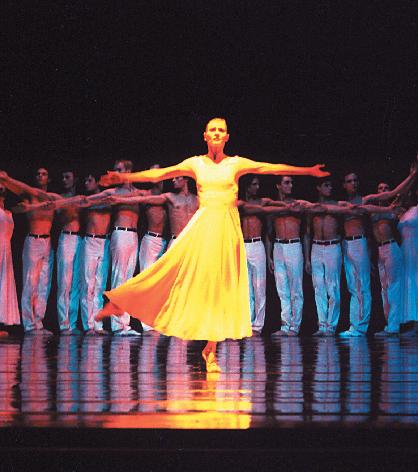
CREDO
Credo in unum Deum, Patrem omnipotentem, factorem coeli et terrae, visibilium omnium et invisibilium.
Et in unum Dominum Jesum Christum, Filium Dei unigenitum, et ex Patre natum ante omnia saecula.
Deum de Deo, lumen de lumine, Deum verum de Deo vero. Genitum, non factum, consubstantialem Patri, per quem omnia facta sunt.
Qui propter nos homines et propter nostram salutem descendit de coelis.
Et incarnatus est de Spiritu Sancto ex Maria Virgine: Et homo factus est.
(Crucifixus etiam pro nobis, sub Pontio Pilato, passus et sepultus est. Et resurrexit tertia die secundum scripturas, et ascendit in coelum, sedet ad desteram Patris. Et iterum venturus est cum gloria, judicare vivos et mortuos, cuius regni non erit finis.
Et in Spiritum Sanctum, Dominum et vivificantem:
Qui ex Patre Filioque procedit. Qui cum Patre et Filio simul adoratur et conglorificatur: Qui locutus est per prophetas. Et in unam, sanctam, catholicam et apostolicam Ecclesiam. Confiteor unum baptisma in remissionern peccatorum. Et exspecto resurrectionem mortuorum. Et vitam venturi saeculi. Amen.)
SANCTUS
Sanctus, Sanctus, Sanctus: Dominus Deus Sabaoth. Pleni sunt coeli et terra gloria tua. Osanna in excelsis.
CREDO
I believe in one God, the Father almighty, maker of heaven and earth, and of all things visible and invisible.
I believe in Jesus Christ, the only begotten Son of God, born of the Father before all ages.
God of God, light of light, True God of true God.
Begotten not made, consubstantial with the Father, and by Whom all things were made. Who for us men and for our salvation came down from heaven.
And was incarnate of the Holy Ghost of the Virgin Mary: And was made man.
(He was also crucified for us, suffered under Pontius Pilate and was burried. And on the third day He rose again according to the scriptures, and ascended in heaven, seated at the right hand of the Father. And He shall come again in glory, to judge the living and the dead, His Kingdom shall have no end. And in the Holy Ghost, the Lord and giver of life: Who proceedeth from the Father and the Son, who together with the Father and the Son, is adored and glorified: Who spoke through the prophets. And in one, holy, Catholic and Apostolic Church. I confess one baptism for the forgiveness of sins. And I await the resurrection of the dead and the life of the world to come. Amen)
(Mozart did not compose music for the parts of the CREDO in brackets.)
SANCTUS
Holy, Holy, Holy: Lord God of hosts. Heaven and earth are full of Thy glory. Hosanna in the highest.
信經
我信惟獨上帝。
全能的聖父,
天地萬物,
無論有形無形 都是祂所創造的。
我信耶穌基督, 天主的獨生子。
祂在萬世之前,由聖父所生。
祂是出自天主的天主, 出自光明的光明, 出自真神的真神。
祂是聖父所生,而非聖父所造, 與聖父同性同體, 萬物是藉着祂創造。
祂為了我們人類, 並為了我們得拯救, 從天國降臨。
因聖靈感孕,
由童貞瑪利亞取得肉軀, 而成為人。
(在本丟比拉多手下受難, 為我們被釘於十字架、埋葬。
祂正如聖經所載, 第三日復活; 升天, 坐在聖父的右邊。
將來必從那况光榮地降臨, 審判活人死人, 祂的國度自有永有。
我信聖靈, 祂是主及賦予生命者, 由聖父、聖子所共發。
祂和聖父、聖子, 同得欽崇,同享光榮, 祂曾藉先知們發言。
我信惟一、聖而公、從宗徒傳下來的教會。
我承認赦罪的聖洗,只有一個。
我期待死人復活。
及永生。阿們。)
(莫扎特沒有為括號內的《信經》經文譜曲。) 聖哉經 聖哉!聖哉!聖哉! 上主、萬有的主, 㢠的光榮充滿天地。 歡呼之聲, 和撒那在那至高處。
Arvo Pärt
帕特
Credo (1968)
I believe
我信 (1968)
Wolfgang Amadues Mozart
莫扎特
Ave verum Corpus, K618
Hail, true Body
聖體頌, K618
BENEDICTUS
Benedictus qui venit in nomine Domini.
Osanna in excelsis.
AGNUS DEI
Agnus Dei, qui tollis peccata mundi: Miserere nobis.
Agnus Dei, qui tollis peccata mundi: Dona nobis pacem.
Credo in Jesum Christum.
Audivistis dictum: oculum pro oculo dentem pro dente. Autem ego vobis dico: Non esse resistendum iniuriae.
Credo.
Ave verum Corpus, natum de Maria Virgine, Vere passum, immolatum in cruce pro homine, Cuius latus perforatum Unda fluxit et sanguine, Esto nobis praegustatum in mortis examine.
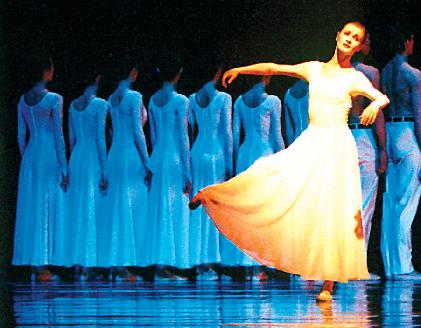
BENEDICTUS
Blessed is he who comes in the name of the Lord.
Hosanna in the highest.
AGNUS DEI
Lamb of God, who takes away the sins of the world: Have mercy on us. Lamb of God, who takes away the sins of the world: Grant us peace.
(Mozart did not compose music for the AGNUS DEI; the music from the KYRIE is used here.)
I believe in Jesus Christ.
You have heard that it has been said: an eye for an eye and a tooth for a tooth. But I say unto you: That you resist not evil.
I believe.
Hail, true Body, born of the Virgin Mary, Truly suffered, sacrificed On the Cross for mankind, Whose pierced side Flowed with water and blood, Be for us a foretaste In the trial of death.
Matthew 5: 38-39
迎主曲 奉主名而來的, 當受讚美。
和撒那在那至高處。
羔羊經 赦免世罪的天主羔羊, 求㢠垂憐我們。 赦免世罪的天主羔羊, 求㢠賜給我們平安。
(莫扎特並未為《羔羊經》譜曲,現借用 《垂憐經》的音樂。)
我信耶穌基督。
「你們聽過這話: 『以眼還眼, 以牙還牙。』
只是我告訴你們, 不要與惡人作對。
我信。
馬太福音第五章38至39節
歡呼,神聖之體! 由童女瑪利亞所生, 承受痛苦犧牲, 為人類釘死在十架上。
從祂被刺穿的肋旁, 血與水湧流, 為了我們先嚐了 死亡的考驗。

Bernard Laux
班納德.勞斯
Zeit und Zeiten
Time and Times
時間與時代
Paul Celan 保羅.雪朗
Brandmal Stigma
污名
Paul Celan
保羅.雪朗
Fadensonnen
Threadsuns 一線陽光
Die Zeit – das sind unterschiedliche Zeiten: Viele Stränge laufen parallel, oft im Gegensinn, selten einander treffend. Wenn sie sich aber doch überschneiden, dann offenbart sich die einzige Wahrheit.
Kaum enthüllt, wird sie schon wieder ausgelöscht von denen, die die Apparate und Mechanismen überwachen, die Weichen unserer Wahrnehmung stellen.
So fallen wir zurück in die einzige Zeit, die über uns zuschlägt wie eine lichtundurchlässige Luke.
In dem Augenblick allein, der die verschiedenen Stränge erkennen ließ, haben sich erkannt die wenigen Lebenden, haben sich Lebewohl zu sagen, nicht: Aufwiedersehn.
Wir schliefen nicht mehr, denn wir lagen im Uhrwerk der Schwermut und bogen die Zeiger wie Ruten, und sie schnellten zurück und peitschten die Zeit bis aufs Blut, und du redetest wachsenden Dämmer, und zwölfmal sagte ich du zur Nacht deiner Worte, und sie tat sich auf und blieb offen, und ich legt ihr ein Aug in den Schoß und flocht dir das andre ins Haar und ein junger Blitz schwamm heran.
Über der grauschwarzen Ödnis. Ein baum –hoher Gedanke greift sich den Lichtton: es sind noch Lieder zu singen jenseits der Menschen.
The time – these are different times Many strands run parallel, often in the opposite direction, seldom meeting one another. But if they do overlap then the absolute truth is revealed.
But barely is it revealed Then it’s erased again by those who monitor the apparatuses and mechanisms, which set the course for our own sense of perception.
So we lapse back into the only time, that slams shut over us like an opaque hatch.
In that moment alone, when the different strands can be identified, the few living people recognise one another, and can say farewell to one another, not: See you again.
(Translated by Annemarie Evans)
We slept no longer, as we lay in the clockwork of melancholy and flexed the clock’s hands like birches, and they sprang back and whipped the time until it bled, and you spoke a growing twilight, and twelve times I called out the night of your words, and it opened up and remained open, and I laid an eye in its lap and plaited the other in your hair and a young flash swam close by.
(Translated by Annemarie Evans)
Above the grey-black wilderness A tree — high thought tunes in to the light’s pitch: there are still songs to be sung on the other side of mankind.
(Translated by Michael Hamburger)
時間──不同的時代, 一絲絲,一縷縷 , 平行,常反向而行, 難得相遇。但要是 確實交會了 絕對的真理 就會顯露。
可是,真理才顯露, 又會被抹煞。
抹煞真理的人,掌握機構和機制。 我們的事物觀,盡皆由此塑造。
所以我們退回 惟一的時間,時間卻在你我上空猛然閉上 有如密不透光的天窗。
惟獨那一刻, 絲絲縷縷都辨認清楚, 為數不多的世人可以彼此相認, 彼此道別,卻不說: 再見。
不能再睡了,我們躺在憂鬱的發條, 把鐘的指針像白樺條一樣屈曲, 反彈的指針把時間鞭打得皮破血流, 你說暮色漸濃, 你的話中,夜,我呼喊了十二次, 夜在擴散,沒有減退, 我一面看着夜的交匯處, 一面讓目光為你編辮子, 年輕的目光在遊近。
灰黑的荒野聳立着 一棵樹── 高尚思緒彷彿 與光的音調一致: 仍有未唱的歌 在人類的彼岸。
Paul Celan
保羅.雪朗
Psalm
詩篇
Niemand knetet uns wieder aus Erde und Lehm, niemand bespricht unsern Staub. Niemand.
Gelobt seist du, Niemand. Dir zulieb wollen wir blühn.
Dir entgegen.
Ein Nichts waren wir, sind wir, werden wir bleiben, blühend: die Nichts-, die Niemandsrose.
Mit dem Griffel seelenhell, dem Staubfaden himmelswüst, der Krone rot vom Purpurwort, das wir sangen über, o über dem Dorn.
Gaius Valerius Catullus
卡圖盧斯
Multas per gentes ...
Viele Länder durchfuhr ich ...
Wandering through many countries...
千里迢迢
Multas per gentes et multa per acquora vectus advenio has miseras, frater, ad inferias, ut te postremo donarem munere mortis et mutam - nequiquam! - alloquerer cinerem, quandoquidem fortuna mihi tete abstulit ipsum, heu, miser indigne frater adempte mihi! nunc tamen interea haec, prisco quae more parentum tradita sunt tristi munere ad inferias, accipe fraterno multum manantia fletu atque in perpetuum, frater, ave atque vale!
Viele Länder durchfuhr ich, fuhr über endlose Meere, um endlich hier zu stehen, Bruder, am einsamen Grab. Gaben hab ich zu bringen, wie wir unsern Toten sie opfern, will mit dem stummen Staub führen ein schweigsam Gespräch, da nun einmal ein unwiderruflich Geschick dich dahinnahm, Bruder, du ärmster, und dich unzeitig früh mir entriss. So empfange denn, was der Väter uralte Sitte heißt, den Verblichnen zu weihn als unser letztes Geschenk, was meinerWehmut Tränen benetzen, Bruder, nimm hin, und in deine Ewigkeit folg dir mein leises Lebwohl!
(Translated by Wolfgang Tilgner)
No one moulds us again out of earth and clay, no one conjures our dust. No one.
Praised be your name, no one. For your sake we shall flower. Towards you.
A Nothing we were, are, shall remain, flowering: the Nothing –, the No One’s Rose.
With our pistil soul-bright, with our stamen heaven-ravaged, our corolla red with the crimson word which we sang over, O over the thorn.
(Translated by Michael Hamburger)
Wandering through many countries and over many seas
To this sad grave, my brother, I come, in order to render you Death’s final duties, and speak, though in vain, to your silent ashes, since fortune has taken your own self away from me alas, my brother, so cruelly torn from me!
Yet now meanwhile take these offerings, which by the custom of our fathers have been handed down for a funeral sacrifice, take them, wet with many tears of a brother, and for ever, O my brother, hail and farewell!
再無人把泥土捏成你我, 再無人使塵土幻化生靈。 無人。
無人,你的名字是讚美。 為了你, 我們會綻放。 向着 你。
虛空 我們曾經、現時、將來 繼續,綻放: 那虛空──,那 無人的玫瑰。
我們的雌蕊使靈魂澄明了, 我們的雄蕊使天堂糟蹋了, 我們的花冠,紅彤彤,染上那 血腥的詞,從前,我們唱着這詞 下面是、下面是 荊棘。
千里迢迢,翻山涉水, 這傷感的墓地,兄弟,我來了, 來助你完成「死亡」的最後職責, 雖然,向着你無聲的灰燼呢喃都是徒勞, 因為命運已把你自我身邊帶走 天啊,多麼殘酷地把你奪去! 但,祭品都收下吧,那是祖宗的傳統 代代相傳的奠儀, 收下吧,都被兄弟的淚沾濕了, 兄弟,且受我一禮,永別了!


